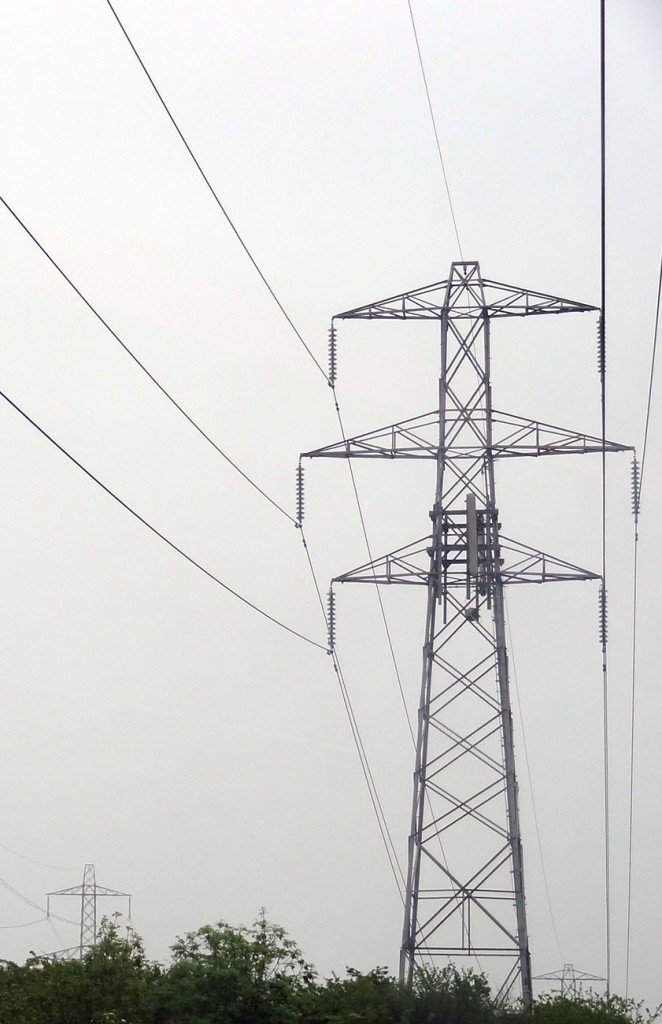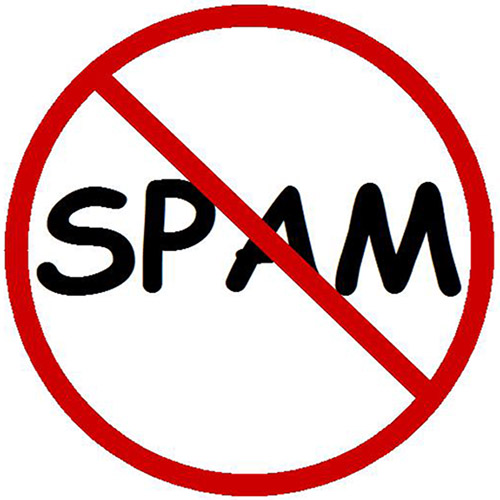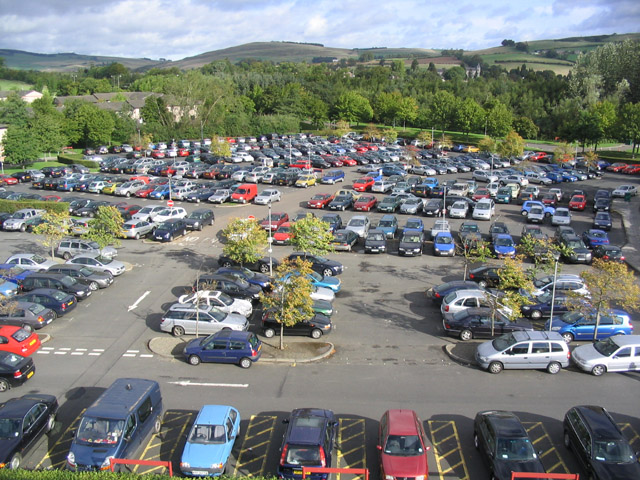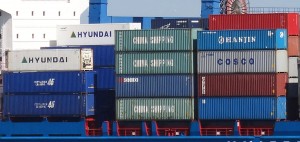 The energy sector has a history of criticism with regards to prices and practices. In the past, Ofgem have tried to make the sector more competitive, by ensuring that price comparisons are easier. At the beginning of this year, many of the big six providers announced price cuts, but within the next few weeks, we will see the reverse occurring, as energy prices begin to rise.
The energy sector has a history of criticism with regards to prices and practices. In the past, Ofgem have tried to make the sector more competitive, by ensuring that price comparisons are easier. At the beginning of this year, many of the big six providers announced price cuts, but within the next few weeks, we will see the reverse occurring, as energy prices begin to rise.
British Gas has announced price rises of 6% from 16th November that will affect over 8 million customers by adding approximately £80 per year to the annual dual fuel bill. Npower will also put its prices up 10 days later (8.8% for gas and 9.1% for electricity), creating higher bills for 3 million people.
In January of this year, when we saw energy prices fall, it was not solely due to Ofgem’s findings. We had a relatively mild winter, which reduced the demand for energy and this fed into lower prices. As the winter now approaches once more, demand for energy will begin to increase, feeding into prices that are now higher.
Furthermore, the energy companies have said that a range of external factors are also adding to their costs and putting increasing pressure on them to increase their charges. Npower’s Chief Commercial Officer said:
“There is never a good time to increase energy bills, particularly when so many people are working hard to make ends meet…But the costs of new statutory schemes, increases in distribution charges and the price of gas for the coming winter are all being driven up by external factors, for example government policy”
 Significant investment is needed in the energy sector. Energy companies are required to set aside money for maintaining and improving the national grid and investing in renewable energy, such as wind and solar power. In order for the energy companies to fund these investments, more money must be raised and the logical method is to put up prices. However, critics are simply blaming ‘these very big lazy companies’ who are passing ‘above-inflation price rises’ onto already squeezed households.
Significant investment is needed in the energy sector. Energy companies are required to set aside money for maintaining and improving the national grid and investing in renewable energy, such as wind and solar power. In order for the energy companies to fund these investments, more money must be raised and the logical method is to put up prices. However, critics are simply blaming ‘these very big lazy companies’ who are passing ‘above-inflation price rises’ onto already squeezed households.
Part of this is undoubtedly to do with the market structure of this sector. A typical oligopoly creates a market which, under certain circumstances, can be highly competitive, but because of barriers to entry that prevent new firms from entering the market may charge higher prices and be inefficient. Indeed, Ofgem has plans to reduce the power of the main energy providers by forcing them to auction off some of the electricity they generate. The aim of this is to free up the market and make it more competitive.
While only three providers have announced price rises, it is inevitable that the other three will follow. The relative increases will create incentives for consumers to switch providers, but crucial to this is an ability to understand the different tariffs on offer and lack of clarity on this has been a big criticism previously levelled at the energy sector. Indeed, half of UK customers have never switched energy providers. Perhaps this is the time to think about it, firstly as a means of saving money and secondly as a means of putting the energy companies in competition with each other. The following articles consider this market.
Energy price rises: how to switch, save and safeguard your supply The Guardian, Mark King (12/10/12)
 Npower and British Gas raise energy prices (including video) BBC News (12/10/12)
Npower and British Gas raise energy prices (including video) BBC News (12/10/12)
Energy price rises? We’re like turkeys voting for Christmas The Telegraph, Rosie Murray-West (12/10/12)
British Gas and Npower to raise prices fuelling fears of a ‘long, cold winter’ for more households Independent
, Graeme Evans (12/10/12)Wholesale prices rise as energy costs jump Wall Street Journal, Sarah Portlock and Jeffrey Sparshott (12/10/12)
British Gas raises gas and electricity prices by 6pc The Telegraph (12/10/12)
Osborne warns energy firms over price hikes Reuters (12/10/12)
Energy price hikes to take effect from next week Independent, Simon Read(13/10/12)
Questions
- What are the main reasons influencing the recent price rises? In each case, explain whether it is a demand- or supply-side factor.
- Using your answer from question 1, illustrate the effect of it on a demand and supply diagram.
- Which features of an oligopolistic market are relevant to the energy sector. How can we use them to explain these higher prices.
- How has government policy affected the energy sector and energy prices?
- Why are customers reluctant to change energy providers? Does this further the energy company’s ability to raise prices?
- Are there any government policies that could be implemented to reduce the power of the energy companies?
 A modern day hindrance is spam email clogging up your inbox with, for example, offers for cheap drugs or notifications that you will inherit enough money to retire to the Bahamas. A recent paper by Justin Rao and David Reiley in the Journal of Economic Perspectives investigates the economics of spam mail (which, as I discovered, from the article gets it’s name from a Monty Python sketch). Remarkably, they quote figures suggesting that 88% of worldwide email traffic is spam. Their paper then provides a number of interesting insights into the business of spam mail.
A modern day hindrance is spam email clogging up your inbox with, for example, offers for cheap drugs or notifications that you will inherit enough money to retire to the Bahamas. A recent paper by Justin Rao and David Reiley in the Journal of Economic Perspectives investigates the economics of spam mail (which, as I discovered, from the article gets it’s name from a Monty Python sketch). Remarkably, they quote figures suggesting that 88% of worldwide email traffic is spam. Their paper then provides a number of interesting insights into the business of spam mail.
First, given that most recipients simply delete it, why is spam mail sent out? For the benefits of sending it to exceed the costs, it must be that somebody is reading and responding to it and the costs must also be reasonably low. Rao and Reiley are able to quantify these costs and benefits. They estimate that if 8.3 million spam emails are sent, only 1.8% (approximately 150,000) will reach the intended recipients’ inboxes, with the remainder being blocked or filtered out. Of these 150,000, just 0.25% (375) are clicked on. Furthermore, these 375 clicks generate just a single sale of the advertised product which is typically sold for around $50. Assuming that free entry of spammers leads to them earning zero economic profit, this means that it costs the spammers around $50 to send the 8.3 million emails.
Second, spam mail clearly imposes a considerable negative externality on society. This includes wasted time for consumers and the costs of the extra server hardware capacity required. Rao and Reiley are also able to quantify the size of the negative externality created. First, they estimate that:
“American firms and consumers experience costs of almost $20 billion annually due to spam.”
This can then be compared to the benefits senders of spam get:
“….. we estimate that spammers and spam-advertised merchants collect gross worldwide revenues on the order of $200 million per year. Thus, the ‘externality ratio’ of external costs to internal benefits for spam is around 100:1.”
They then compare this to estimates for other negative externalities such as car pollution and conclude that the size of the negative externality from spam is significantly greater.
Finally, they also point out that it is predominantly the larger email service providers i.e. Yahoo! Mail, Microsoft Hotmail, and Google Gmail who have both the incentives and resources to fund interventions to eradicate spam. For example, in 2009 Microsoft and Pfizer (the manufacturer of Viagra which faces competition from counterfeit versions often advertised by spam) financially supported the successful operation to shut down the largest spam distributor. Clearly, such operations have large positive spillovers for email users. However, as they also discuss, anti-spam technology also increases the fixed costs of competing as an email provider and they suggest that this has contributed to the increased concentration in the market.
The unpalatable business of spam The undercover economist, Tim Harford (19/07/12)
Huge spam botnet Grum is taken out by security researchers BBC News (19/07/12)
Spammers make a combined $200 million a year while costing society $20 billion BGR, Dan Graziano (28/08/12)
Questions
- Explain why free entry results in zero economic profit.
- Explain how an increase in fixed costs can lead to an increase in concentration.
- Why does Microsoft have large incentives to eradicate spam mail?
- In what ways does the externality created by spam mail differ from other forms of advertising?
- How might government policies alter the costs and benefits of sending spam mail?
 Everyone who drives in the UK is required to take out car insurance. Whilst fully comprehensive is voluntary, it is compulsory to have at least third party insurance, which covers damage to other vehicles. Insurance premiums are calculated based on a number of different variables, such that two people driving the same car may face wildly different costs.
Everyone who drives in the UK is required to take out car insurance. Whilst fully comprehensive is voluntary, it is compulsory to have at least third party insurance, which covers damage to other vehicles. Insurance premiums are calculated based on a number of different variables, such that two people driving the same car may face wildly different costs.
Although there are many insurance companies to choose from, this industry has been referred to the Competition Commission by the OFT as it was ‘worried the structure of the market was making costs and premiums unnecessarily high.’
According to Moneysupermarket, the average cost of car insurance reached a high of £554 in April 2011, but have fallen by £76 since. With tight incomes across the UK for many families, high car insurance premiums is another strain and thus this investigation will come at an apt time, even though the findings of the CC may not be reported for 2 years. The Association of British Insurers (ABI) said that the investigation would:
‘bring much-needed reforms to the market that will, in turn, result in lower car insurance premiums for consumers’.
 The problem seems to be that when an individual is involved in an accident and sends their car off for repairs, their insurance company doesn’t have much control over the bills they end up paying, which can be inflated by £155 each time. This therefore leads into higher costs for the insurance company, which are then passed on the driver in the form of an increased premium. Other concerns were that courtesy cars were being offered, at an estimated cost of £560 per vehicle (according to the OFT) and that drivers were using these cars for longer than necessary, once again causing costs to rise.
The problem seems to be that when an individual is involved in an accident and sends their car off for repairs, their insurance company doesn’t have much control over the bills they end up paying, which can be inflated by £155 each time. This therefore leads into higher costs for the insurance company, which are then passed on the driver in the form of an increased premium. Other concerns were that courtesy cars were being offered, at an estimated cost of £560 per vehicle (according to the OFT) and that drivers were using these cars for longer than necessary, once again causing costs to rise.
Altogether, it has been suggested that the actions of the insurance company of ‘not-at-fault’ drivers, car hire companies, repairers and brokers push up the prices for ‘at-fault’ drivers’ insurance companies. Given that any insurance company is just as likely to be the ‘at-fault’ insurance company, they all face rising costs.
 Back in May, the OFT had already decided that the car insurance market required a more detailed investigation, because of the ‘dysfunctionality’ of the market. Following a public consultation, the industry will now face an investigation by the CC. One additional area that may be of interest to the CC came to light last year, where it was found that insurance companies were claiming against themselves in a bid to drive up premiums. Although the investigation will take some time, it is still a timely review for many drivers, who have seen the cost of motoring reach record highs. The following articles consider the market for car insurance.
Back in May, the OFT had already decided that the car insurance market required a more detailed investigation, because of the ‘dysfunctionality’ of the market. Following a public consultation, the industry will now face an investigation by the CC. One additional area that may be of interest to the CC came to light last year, where it was found that insurance companies were claiming against themselves in a bid to drive up premiums. Although the investigation will take some time, it is still a timely review for many drivers, who have seen the cost of motoring reach record highs. The following articles consider the market for car insurance.
Articles
Car insurance market referred to Competition Commission BBC News (28/9/12)
No quick fix for motor insurance abuses, says watchdog Independent, Simon Read (29/9/12)
Car insurance industry faces probe The Press Association (28/9/12)
Competition Commission referral will take time to lower motor insurance premiums The Telegraph, Rosie Murray-West (28/9/12)
UK car insurance probe over-shadows Direct Line IPO Reuters, Matt Scuffham and Myles Neligan (28/9/12)
 Car insurance scrutinized over high premiums Sky News (28/9/12)
Car insurance scrutinized over high premiums Sky News (28/9/12)
Rip-off motor insurance firms face competition watchdogs probe over £225million racket Mail Online, Ray Massey (28/9/12)
Questions
- Why are car insurance firms willing to take on other people’s risks?
- What conditions must exist in a market for private companies to provide acr insurance (or insurance of any kind)?
- Why is third-party insurance compulsory, whereas people can opt for fully comprehensive insurance?
- What powers does (a) the OFT and (b) the Competition Commission have? Is it likely that this report will have any impact on car insurance premiums?
- What allegations have been made that help to explain why insurance premiums I this industry have increased?
- Is there an argument for allowing the industry itself to provide its own regulation?
- In which market structure would you place the car insurance industry?
 With globalisation, more and more businesses have found it beneficial to ‘go global’. There are many reasons why a firm might choose to expand its production or market to other countries and one particular advantage is cutting costs in the manufacturing of products.
With globalisation, more and more businesses have found it beneficial to ‘go global’. There are many reasons why a firm might choose to expand its production or market to other countries and one particular advantage is cutting costs in the manufacturing of products.
Countries such as China and India have become leaders in production. Look at many of the items you own – I’m sure you’ll see a ‘Made in China’ or ‘Made in India’ amongst them. These fast emerging countries were highly sought after as places to produce due to much cheaper production costs. This advantage led to Western companies outsourcing much of their manufacturing base to China, as a means of retaining a competitive advantage.
However, the cost advantages that China boasted are now less significant and we may be about to see the emergence of a new manufacturing hub. Other countries that are further behind the BRICS in the development process now have cost advantages over places like China and so we may see another transfer of manufacturing to other parts of the world.
 When splitting up a supply chain to gain cost advantages a key consideration is the extent to which you lose control. Communication and co-ordination issues can emerge when design takes place in one country; production in another and then the products are sold around the world. When cost differences are huge, these problems can be overlooked, as what they might cost you in terms of lost time etc. is easily made up by savings through cheaper labour.
When splitting up a supply chain to gain cost advantages a key consideration is the extent to which you lose control. Communication and co-ordination issues can emerge when design takes place in one country; production in another and then the products are sold around the world. When cost differences are huge, these problems can be overlooked, as what they might cost you in terms of lost time etc. is easily made up by savings through cheaper labour.
However, when the cost advantages of production in China shrink, companies are still left with the problems of communication and co-ordination. These now represent more significant costs that could be reduced were production to revert to the country of design or if production were to be moved to an even cheaper country.
The following article from BBC News considers the issues surrounding the supply chain and how businesses may benefit from more collaboration.
Better collaboration lets businesses take back the supply chain BBC News, Alastair Sorbie (15/6/12)
Questions
- What are the arguments for becoming a multinational?
- Why do host countries, such as the BRICS accept inward investment? What do they gain from it?
- Explain how the product life cycle can affect the profitability of a MNC and how the company might respond.
- What are the disadvantages to a MNC from ‘going global’?
- What are the problems faced by developing countries acting as host nations?
- How has technology affected both big and small businesses?
 Binge drinking is a problem that has seen much attention, especially with regards to minimum price controls. However, in this blog, we consider attention in this sector concerning taxation on beer.
Binge drinking is a problem that has seen much attention, especially with regards to minimum price controls. However, in this blog, we consider attention in this sector concerning taxation on beer.
Alcohol is widely considered to be a de-merit good with negative externalities imposing external costs on society. This is one of the reasons why taxes are imposed on alcoholic beverages. By increasing production costs to the firms providing these drinks, prices rise and hence the policy aims to discourage consumption.
During the recession, many businesses have seen demand fall and one sector hit particularly hard because of this and very high tax rates has been the local pub community. Duty on beer has increased since 2008 by some 42%. As such, many rural and suburban communities have seen their local watering holes close down and this has led to a campaign by CAMRA to force a debate in Parliament, as a means of protecting ‘one of Britain’s oldest and best loved institutions’. Data suggests that 12 pubs per week are closing down, thus the future of the industry is now under threat. This may also have further damaging effects on local communities, as it may adversely affect the social aspect of communities. Camra’s Chief Executive, Mike Benner said:
‘Whether situated in a small village, city high street, or on the edge of a housing estate, pubs are so central to our society that whole communities can grow around a particular pub.’
According to a study, pubs in Lancashire and the West Midlands have been hardest hit by the pub closures. If pubs don’t pass the tax increase on to consumers in the form of higher prices, then they must bear the burden. If they do pass the tax rises on to consumers then the larger chain firms can increase their market share by selling at a lower price. They are also facing growing pressure from the supermarket industry, which are able to sell cheap alcohol, also contributing to going to the pub becoming an ‘unaffordable activity’. The following articles consider this industry.
Pub closures spark beer tax plea The Press Association (30/4/12)
A dozen pubs close each week Telegraph, James Hall (30/4/12)
Calls for beer tax rethink as 12 pubs shut every week BBC Radio 1, News Beat, Steve Holden (30/4/12)
Pubs in the West Midlands hit hardest by pub closures ITV News (30/4/12)
Questions
- Illustrate the effect of a tax being imposed on a product such as beer.
- In this market, would the tax be more likely to be borne by the producers or consumers? Explain your answer and illustrate on the previous diagram why this is the case.
- Why are supermarkets able to compete local pubs out of the alcohol market? Do you think a minimum price will have any effect?
- What is a de-merit good? Illustrate the concept of a negative externality on a diagram.
- Explain how a de-merit good causes the market to fail. To what extent does the tax on beer solve the market failure?
- Why are there likely to be adverse effects on local communities? Could this have an adverse effect on economic activity in the area?
 The energy sector has a history of criticism with regards to prices and practices. In the past, Ofgem have tried to make the sector more competitive, by ensuring that price comparisons are easier. At the beginning of this year, many of the big six providers announced price cuts, but within the next few weeks, we will see the reverse occurring, as energy prices begin to rise.
The energy sector has a history of criticism with regards to prices and practices. In the past, Ofgem have tried to make the sector more competitive, by ensuring that price comparisons are easier. At the beginning of this year, many of the big six providers announced price cuts, but within the next few weeks, we will see the reverse occurring, as energy prices begin to rise. Significant investment is needed in the energy sector. Energy companies are required to set aside money for maintaining and improving the national grid and investing in renewable energy, such as wind and solar power. In order for the energy companies to fund these investments, more money must be raised and the logical method is to put up prices. However, critics are simply blaming ‘these very big lazy companies’ who are passing ‘above-inflation price rises’ onto already squeezed households.
Significant investment is needed in the energy sector. Energy companies are required to set aside money for maintaining and improving the national grid and investing in renewable energy, such as wind and solar power. In order for the energy companies to fund these investments, more money must be raised and the logical method is to put up prices. However, critics are simply blaming ‘these very big lazy companies’ who are passing ‘above-inflation price rises’ onto already squeezed households. Npower and British Gas raise energy prices (including video) BBC News (12/10/12)
Npower and British Gas raise energy prices (including video) BBC News (12/10/12)





